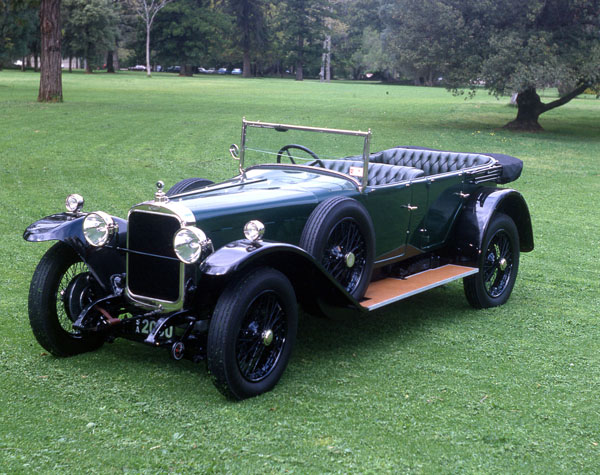
Sunbeam amalgamated with both the Talbot and Darracq marques in 1920 to form the Anglo-French STD combine. Prior to this time Sunbeam was making cars which were rather unconventional but when Louis Coatalen joined the company in 1909 as their designer they introduced a new range of four-cylinder and six-cylinder cars.
Of these the 12/16 was quite outstanding, so much so, that Rover assisted in the manufacture of these cars during World War I, so that the allied forces needs could be met. Most Sunbeam cars made during the Coatalen era were cars of great refinement but not of outstanding performance.
The new generation 12/30 of 1923 completely met the needs of the British population. The car was based on a 14 chassis, originally developed by Darracq. This was a rather simple but robust design which had channel-section side members, and pressed metal cross-bracing members. Typical for that period both front and rear suspension comprised leaf springs and the rear axle was suspended on full cantilevered springs. All four wheels were of the ten spoke variety.
The 12/30 was powered by a low revving, strong overhead valve four-cylinder unit of 1598 cc capacity. This front mounted engine drove the rear wheels through a three-speed transmission, with the gear lever positioned to the outside of the driver’s seat.
In the early 1920s most cars only had brakes on the rear wheels and the 12/30 was no different. Front brakes became more common as the 1920s progressed.
When compared with the Bullnose Morris, one of its competitors for market share, it was no faster, nor did it have better roadholding but it certainly was better built. All together only around 95 Sunbeam 12/30 cars were built during the years 1923 to 1926.